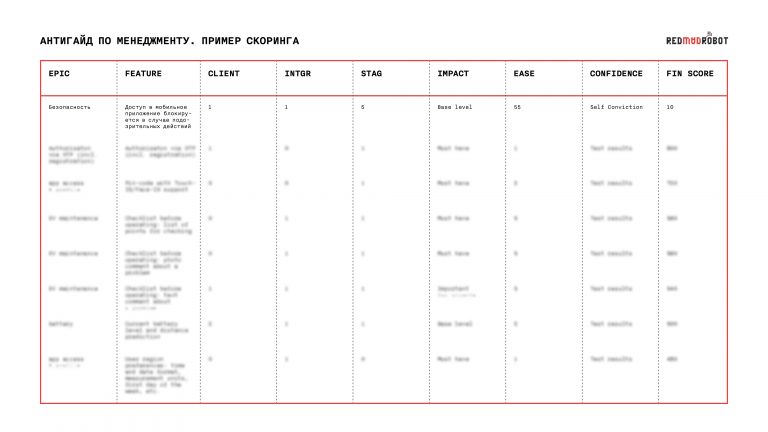10 Tips for Successful Team Leads

You may say that there is no place for the word “I” in the team, nevertheless, every serious team has a leader – he is also a team leader. Team leads are responsible for everything from day-to-day work to providing timely support to the team to achieve their goals.
Depending on the structure of the company, it may not be clear what exactly the role of a team leader includes, and how it differs from the role of a project manager. In this article, we will talk about who a team leader really is, what he does, and how this role differs from the role of a project manager. We will also give 10 tips to help you become a successful team leader.
Who is a team leader?
A team leader is responsible for managing a group of people in the course of implementing a specific initiative or achieving a specific goal. Team leads are not necessarily managers and may not be associated with the people management function. Teamlead is responsible for creation of a collaborative environment and determining the direction of development of a particular project or program.
The team leader provides the working group with guidance on the project or portfolio of projects. The duties of the team leader include delegating work, monitoring the achievement of goals and, if necessary, instructing team members. Team leads often act as the group’s de facto mentors, even if they don’t have a leadership position.
What does a team leader do?
A team leader may be responsible for a project, program, or portfolio of programs.
Key responsibilities of a team leader:
Work organization;
Informing about goals;
Providing context;
Delegation of tasks;
Problem solving;
Project progress management;
Maintaining reports for stakeholders;
Coaching for staff development;
Motivating the team to achieve the set goals;
Encouraging the strengths of team members and identifying growth points;
Designation and upholding the interests of the team.
Comparing the role of a team leader with the role of a project manager
Often the skills of a team leader intersect with project management skills. In many situations, the team lead and the project manager can be the same person, and this is quite normal.
To understand the difference between the role of a team lead and a project manager, it is worth paying attention to the main goals for each of these positions. The main task of the team leader is to motivate and support his team in order to ensure efficient work. In turn, the project manager usually focuses on achieving specific goals. results and completing tasks.
Top 10 Team Lead Skills
Regardless of the type of project you are leading, a good team leader is able to confidently manage and communicate successfully with his team.
Here are 10 skills you need to get started:
1. Goal management
One of the most valuable things you can do as a team leader is ask yourself: Why is this work important?
Each project is aimed at achieving a common goal of a team or company, but often these goals are not always obvious in daily activities. When a team realizes how their work affects problem solving, they are more motivated to complete the project effectively.
Good team leads create context so that the team understands why their work is important and how it fits into the overall company vision. With this context, team members can prioritize more effectively and ensure they get the job done to the best of their ability and on time.
2. Making progress on the project
Once your team has set goals, it’s also important to clearly articulate the steps to achieve them. The team leader is like the captain of a ship: you give the team a direction towards the goal and determine the path to follow.
There are three main elements that ensure effective progress in work:
Define metrics. Team members cannot understand if they are on the right track if they do not have a clear idea of what they are striving for. Therefore, before you get started, set measurable SMART goalsto determine how you will measure success.
Track the process progress. It is not enough to know where you are going, you must also know where you are in relation to your goal. Make sure your team members have a clear understanding about the timing of the project and see who does what and when.
Report changes. As a team leader, it is also your responsibility to monitor the progress of the project and share information with your team and all stakeholders. The best way to do this is with project status reportswhich give a clear indication of whether the project is on track, at risk, or behind schedule.
3. Communication
As in any other leadership position, team leaders need excellent communication skills. This includes communicating with team members about work, updating stakeholders on the progress of the project, and coordinating with any cross-functional partners on behalf of the project team. It is important to note that communication includes not only verbal communication, but also non-verbal elements such as body language and facial expressions. In fact, most of the information is conveyed through non-verbal means of communication.
Important elements of communication are:
Interpersonal skills such as communication take time to develop. Don’t worry if communication isn’t your forte right now. If you are just learning to establish a trusting relationship, start with communications plan. A communications plan is a detailed plan that defines what information will be communicated and where. For example, where asynchronous communication will be built in project managementand what will be communicated at weekly team meetings.
4. Organization
Team leads often act as project managers. But even if you are not, you still have to organize the work of your team. As a team leader, you guide the team towards the ultimate goal; in turn, the organization of work is a key element for its achievement.
Think of organizing information as creating a single source of correct information. Your team must count on you and trust that you will provide the necessary information in a timely manner.
The best way to create a great organizational system for the entire team is to use a workflow management tool like asana. Asana helps you track work, manage projects, and share progress towards goals. When everyone understands who does what and when, they have the opportunity to do their job in the best possible way.
5. Delegation
The best team leads know they can’t do everything themselves. The whole is greater than the sum of its parts, and this is also a key aspect of team leadership. Delegation is a key element of coaching and mentoring. Delegating not only offloads work, but also gives team members the opportunity to try their hand at new areas.
To delegate effectively, you must first understand the strengths and weaknesses of each team member, as well as his interests. That way, you’ll know exactly what they should be tasked with and what new skills they’d like to learn. Do not forget that your employees to whom you delegate work may not do everything the way you would do it, because delegation is about learning to let go and hand over the reins to others.
If you’re having trouble delegating work, try composing Eisenhower matrix. Or, if you’re still in doubt, follow this simple four-step process:
Determine the work that can be delegated.
Clarify urgency and importance so team members can prioritize.
Provide necessary training.
Trust, but verify.
6. Problem Solving
No project goes without hitches. Therefore, team leads should be excellent problem-solving experts. To achieve this goal, it is important to create a context that helps to prioritize tasks and identify issues that require immediate action. This approach allows you to make the right decisions in the interests of the whole team.
If you are new to dealing with difficult situations, try asking yourself the following questions:
How will the team approach the work?
What is the most important?
What should be the focus?
How will this decision affect the team?
7. Time management
Team leads are masters of time management, they perfectly understand how to prioritize work. To develop your time management skills, try some time management strategies and tools. This will help you make the most of your day. You can also invite your team members to do the same and choose a time management strategy that works for them.
If you don’t know where to start, try this:
GTD method focuses on efficient organization of information using external tools, which allows us to use our mental resources more productively.
Time blocking method involves grouping similar tasks for simultaneous work on them and scheduling these time blocks in the calendar.
Pomodoro Technique provides a set of sprints and breaks to achieve maximum productivity and concentration.
Pareto principlealso known as the 80/20 rule, helps you get 80% of the work done with 20% of the effort.
The “eat the frog” method states that to achieve the best results at work, you need to solve your biggest task (the frog) at the very beginning of the day.
8. Employee workload management
As a team leader, you are responsible for helping your team achieve their goals. Part of this responsibility is to make sure that the work goes according to plan and no one comes close to burnout. During team meetings and 1:1 meetings, ask your team members how they feel about their workload, and if they need to unload, postpone or delegate anything.
As a team leader, you should have an idea of what your team is up to. But it’s not always possible to keep in mind especially as the team grows.. Instead, try using team workload management toolto keep track of what each of your employees is working on. This is especially useful if your team is working on different projects and somewhere is not fully informed. If all the information is in one place, you can quickly understand, and prevent overload.
9. Team building
Team leads are not only the ideological inspirers of the team, but also managers responsible for encouraging and motivating employees. To be an effective leader, you need to spend time on team building and make sure that everyone feels like a part of it.
Team building begins with everyone understanding the goals of the team in order to move towards the end result together, but it doesn’t end there. To create an effective team:
10. Mentoring and coaching
An important component of the role of a team leader is coaching, training and mentoring, when relevant. There may be newcomers on your team and they may have questions about how to complete a certain task. If you have a solution to their problem, coach them, and if not, refer them to a specialist who can answer their questions.
Even if you individual contributor (an employee without managerial responsibilities), and do not lead the staff, as a team leader you are obliged to support and encourage members of your project team. Invest in your leadership skills and develop your emotional intelligence so you can support your team when they need it.
Keep your work organized with project management tools
You will not be able to perform your duties effectively if you do not create a clear system for communicating and sharing information with your team. To increase the level of transparency of your project team’s work, it is recommended to use project management tools that will allow you to efficiently build collaboration to achieve the best results.
The translation of the material was prepared in anticipation of the start of the System Analyst course. Team Lead. Link You can learn more about the course and register for free webinars.




